Who said making broth from scratch had to be complicated? Save your hard earned money and learn how to make something from nothing.
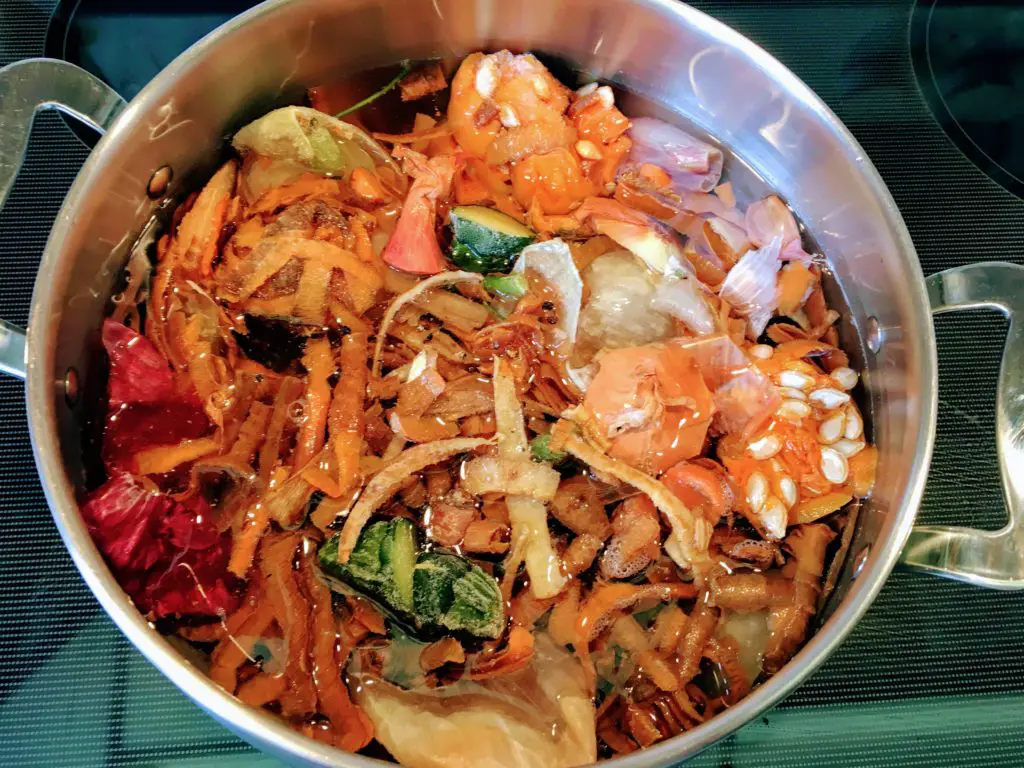
WHY SHOULD I MAKE MY OWN BROTH FROM SCRATCH?
I get it. We all have busy lives. Who has time to make their own broth when you can pick up a carton for three or four bucks? If you pay anything less than that, I promise you it’s not a steal. Take a good look at the label the next time you want to put it in your shopping cart and tell me what you see. It’s going to be packed with sodium!
HOW TO MAKE STOCK WITH FOOD SCRAPS VIDEO
If this is your first time visiting the kitchen, you’re about to find out why I call my kitchen vintage… If you like my style, please consider subscribing to the Vintage Kitchen Vixen YouTube channel!
This article may contain affiliate links, meaning that if you choose to purchase something after clicking on one of the links in this post, I may earn a small commission at no additional cost to you.
DON’T LET THOSE SOUP MARKETERS FOOL YOU!
Oh, sure, you can get low sodium broths, but wait. I once reached for a carton of no salt added vegetable broth that boasted all natural flavours, but then I looked at the label. It had brown sugar, pear puree, apple juice concentrate, dextrose (that’s sugar, if you weren’t aware), and natural flavour. The only thing it was missing was caramel colouring. By the way, the organic version also had three kinds of sugars tucked away.
To put it simply, we have four options available to us:
- Buy cheap broth and burden your poor hardworking heart with the high sodium content.
- Buy average priced sodium-free broth with pears in it and other hidden sugars. (Can you tell that the pear thing irks me?)
- Buy pricey broth with wholesome, clean ingredients.
- Make your own!
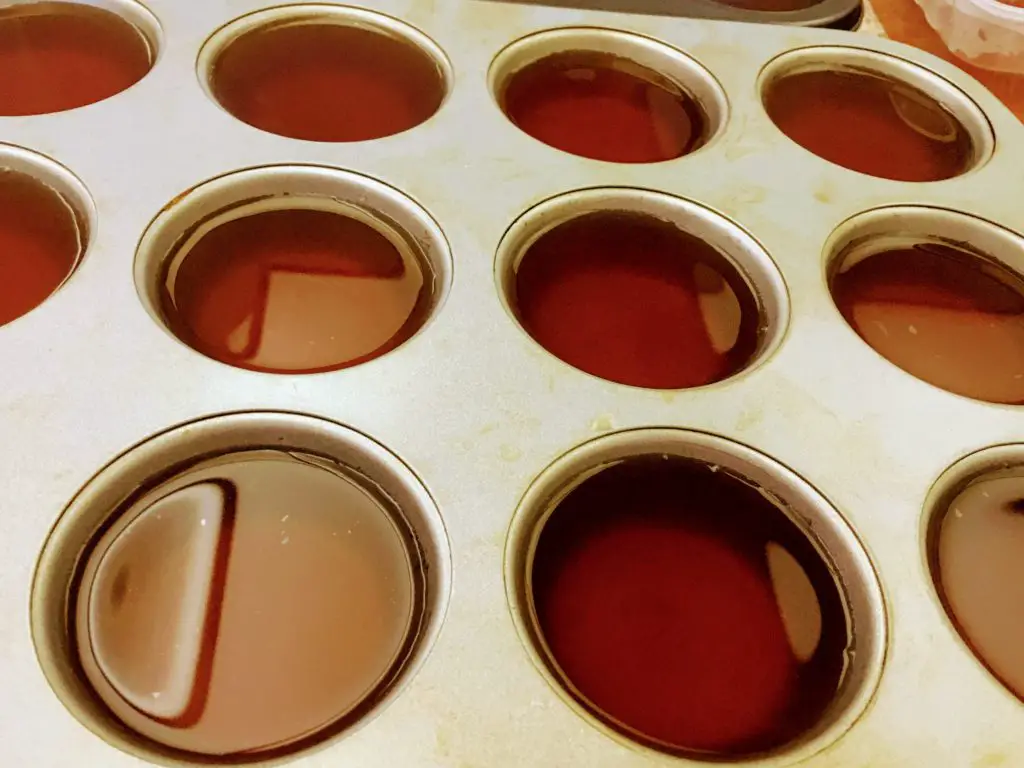
MAKE BROTH FROM SCRATCH ON THE CHEAP
Making homemade broth doesn’t need to be time consuming or expensive. At any given time, you will find large ziplock bags in my freezer with kitchen scraps. Scraps that would have otherwise been chucked in the compost bin to be ravaged by pesky city squirrels. In this sense, we’re making something from nothing.
Really, if our great-grandmothers could see the sheer amount of food we throw out because we can’t be bothered to challenge ourselves to use it, they would wallop us good. Somewhere in the last century, we grew accustomed to having enough to eat and never learned how to be resourceful in the kitchen. When we see a soft, wrinkly potato, we throw it out instead of cutting it up and adding it into a soup. The truth is, we grow wealthier when we learn how to stretch what we have. When we stretch what we have, we save the money we don’t spend on commercial broths with pears.
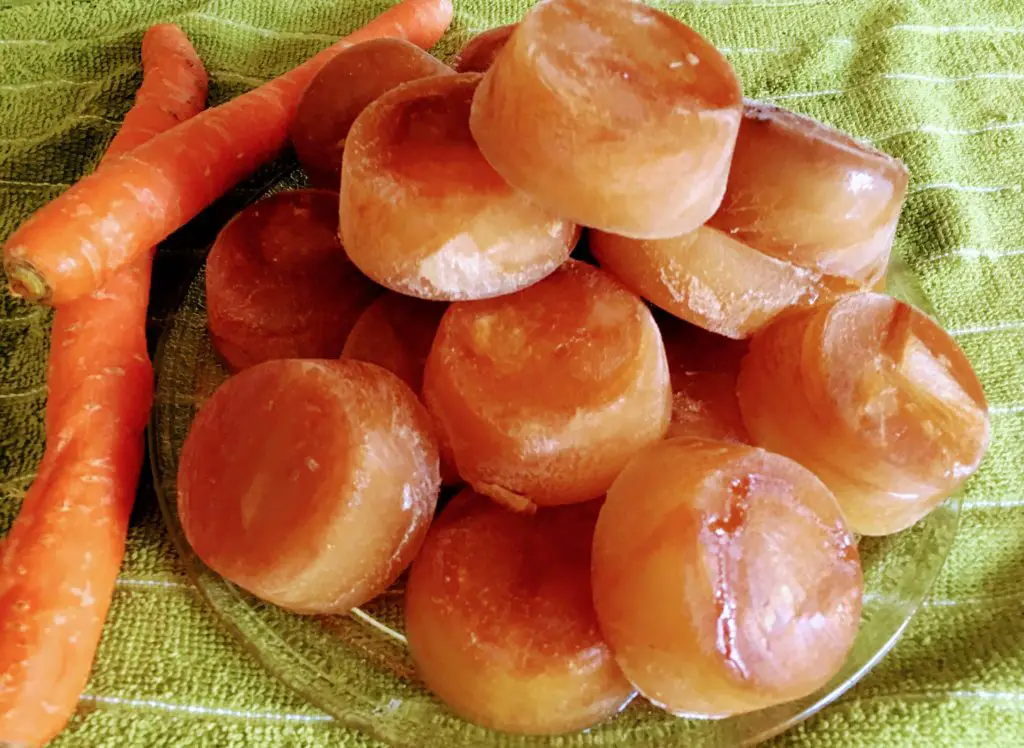
WHICH KITCHEN SCRAPS SHOULD I SAVE?
This is where it gets fun. All you’ll need is a couple of large freezer bags and a sharpie to label them. The bags in my freezer are labelled “Veggie Stock” and “Fish Stock”. Another good one to have would be poultry, but if your veggie stock bag is half way full and you have chicken or turkey skin and bones on your hands, you might as well get a batch going. It doesn’t take long.
Here’s a list of kitchen scraps to stock up on:
- Carrot peels.
- Squash guts (you can also puree these, but if you don’t have time to separate the seeds, toss those guts in the freezer bag)
- Onion and garlic butts. I also save the inner skins of the onion. The peel can add colour to your broth.
- Celery leaves and tops.
- Corn cobs (cut these into manageable chunks).
- Leek and green onion scraps.
- Parsley and kale stems.
- Tomato seeds, cores, and skins.
- Shrimp shells.
- Bacon rinds.
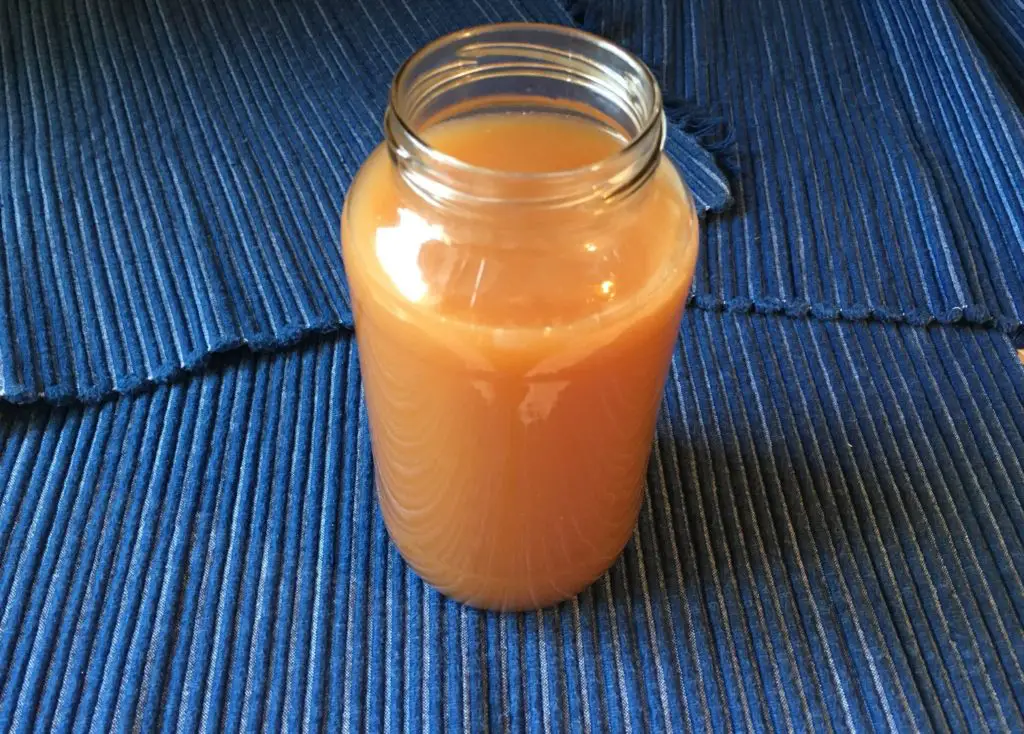
WHAT DO I DO WHEN MY FREEZER BAG IS FULL?
If you don’t have a stock pot, you might want to consider getting your broth on when the bag is half full. My largest pot is a dutch oven, so half a bag is all I can manage at a time. The first time my husband watched me make stock was when I was shooting the video for this post. He was surprised that I didn’t heat up oil in the pot and quickly sauté my frozen scraps, insisting that it helps release their oils. Oops! I usually do this when I’m making a meat-based broth or a stock with fresh ingredients, but when I have an icy vegetable mass glued together with carrot shavings, I can’t be bothered. Anyhow, here’s what you do.
- Heat some oil in a stock pot or dutch oven–the biggest pot you have–and sauté your scraps (optional).
- If you choose to skip the first step, then just shrug your shoulders and put everything in the pot.
- Crack 5-7 whole peppercorns with a heavy pan and toss them into the pot.
- Fill with cold water until the scraps are just covered.
- Bring to a boil and then simmer for thirty minutes.
- Strain the broth through a mesh sieve and allow to cool.
- Portion your broth into convenient measurements and freeze once completely cooled.
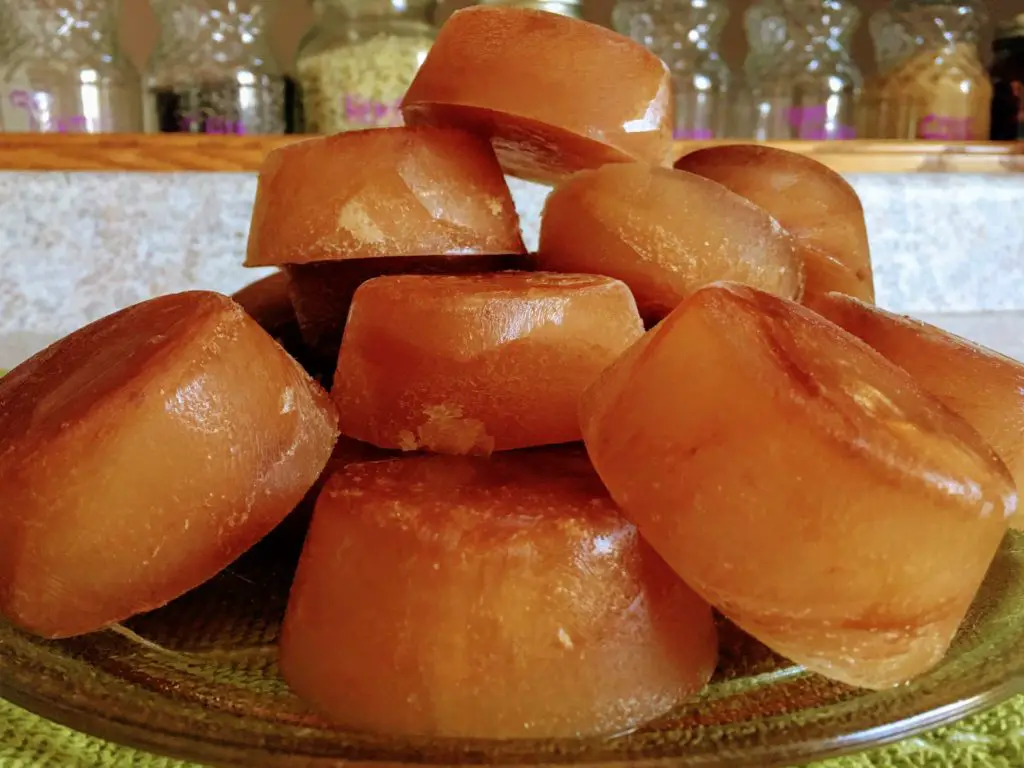
DID YOU NOTICE?
I don’t add pears to my broth. I also don’t add salt. The reason for this is I don’t know what I’ll be making when I need my broth. If I’m making a risotto, for example, I want to have full control of how much salt goes into my dish because of all the parmesan cheese that goes into the recipe. When I cook, I’m always tasting and adding salt and seasoning as needed, so I really don’t need to add anything when I’m making stock. By the way, everything is 100% natural flavour. I don’t know where I can buy the natural flavour that comes in a bottle that all these big companies seem to use, do you?
A COOL TRICK TO STORE YOUR HOMEMADE BROTH
I like measuring out my stock into convenient portions, so if a recipe calls for two cups of broth, I won’t have extra broth sitting in the back of my fridge until someone finds it seven weeks later. My favourite trick is to use muffin tins when I’m portioning off my broth. One round is approximately a half cup, which works beautifully. Once they’re frozen, I’ll pop them out the next day and store them in a labeled freezer bag. Empty yogurt containers are another winner because I can store larger batches of stock for soups and recipes that call for a lot of stock.
GO FORTH AND MAKE YOUR OWN STOCK!
I’m curious. Have you ever made your own stock before? Is it something you do regularly? Are there any tips you can share in the comments below? If making broth from scratch is something you never considered before, I hope I inspired you to try it out for yourself. Start saving those scraps and let me know how it goes! Comment below, find me on Facebook or tag me on Instagram.
PIN IT FOR LATER
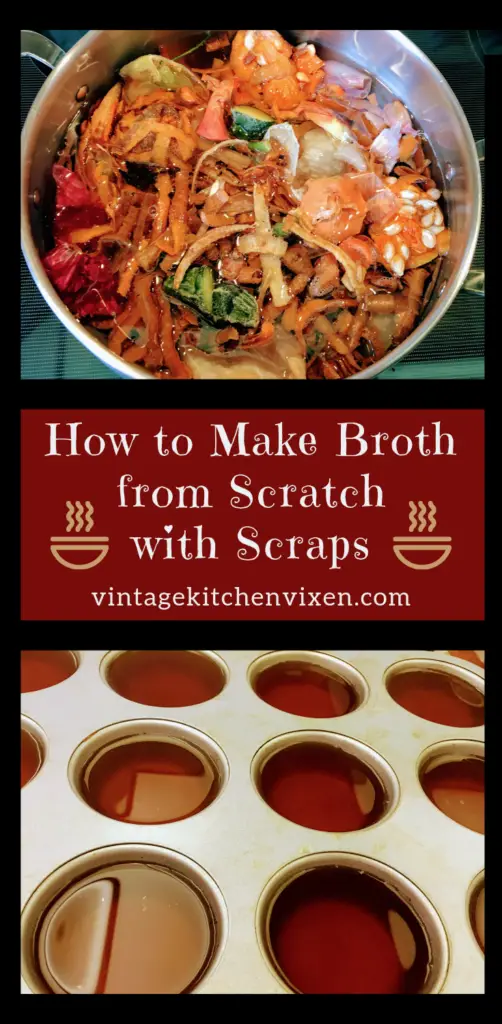
Love and gratitude,



Sylvia,
You’ve convinced me! I’m gonna do this. I used to be better about using more and wasting less, but since I’ve become an empty-nester I’ve gotten sloppy. Here’s to being more resourceful with our food!
I’m glad I could convince you, Suzy! I really don’t know how I manage to do it myself with a toddler getting into trouble every five seconds. I think it’s a combination of determination and me getting tired of spending money on inferior products. Also, I’m massively inspired by wartime rationing stories and how creative those ladies got with the little food they had. There’s so much for me to learn!
I love this! Yay for being sustainable and zero waste with food! I’m going to start doing this with my scraps.
Yay! I’m thrilled to hear it, Marisa!
This is amazing! I’ve never made my own stock before. I love your idea for freezing them in muffin tins! What a fantastic idea!